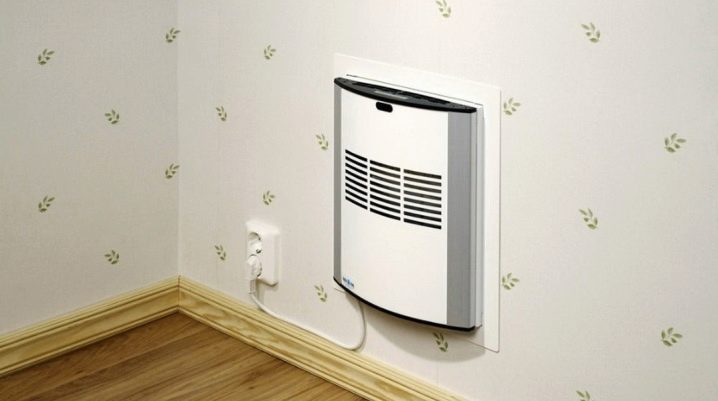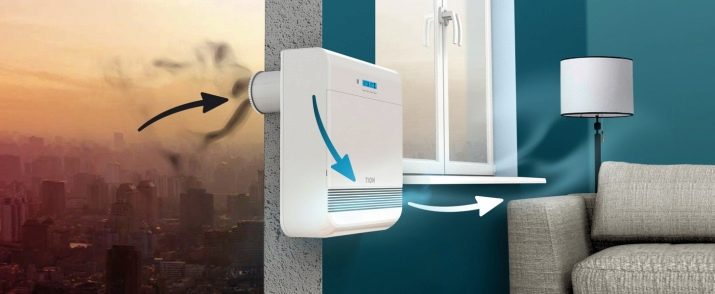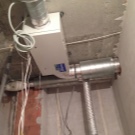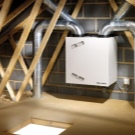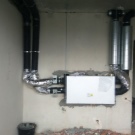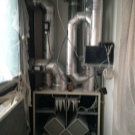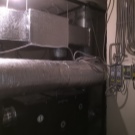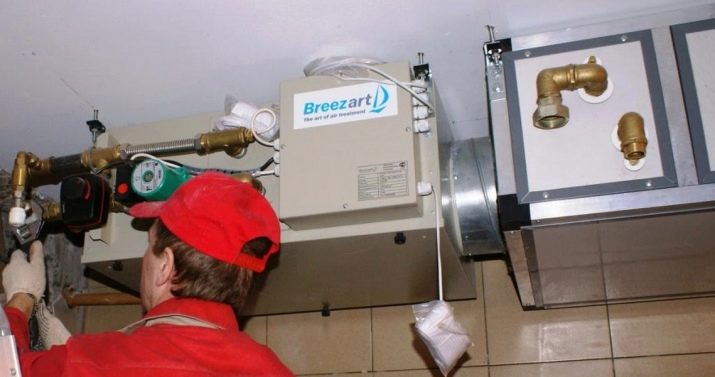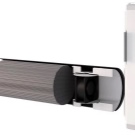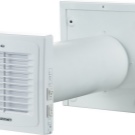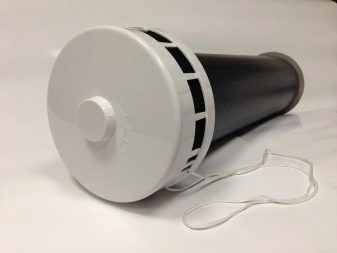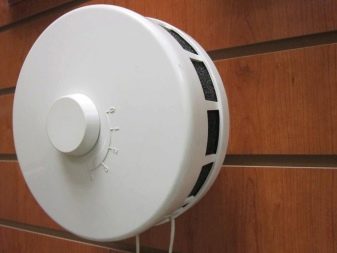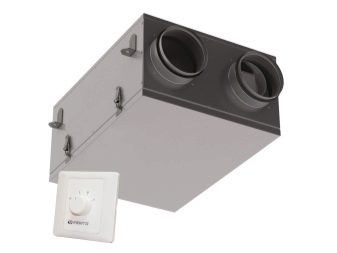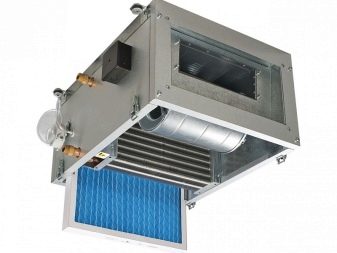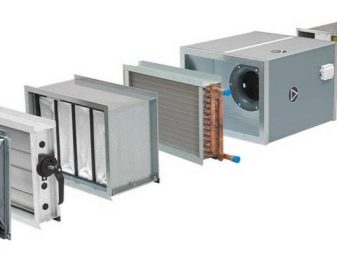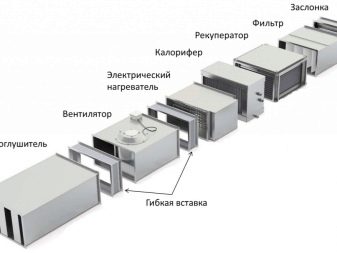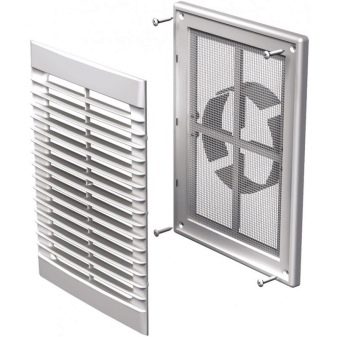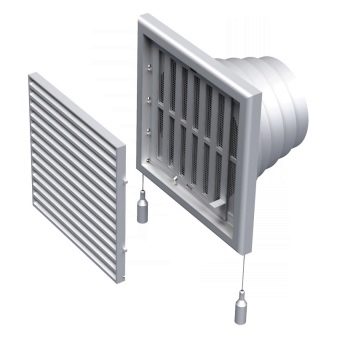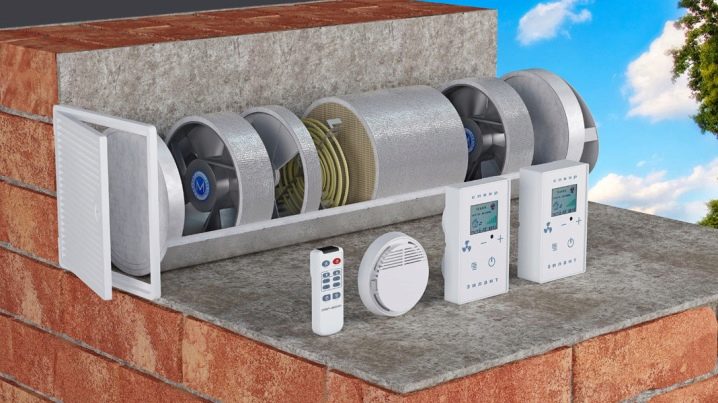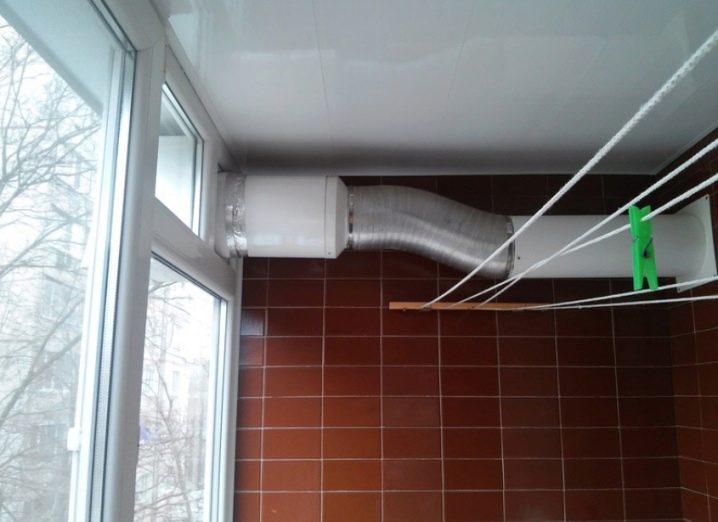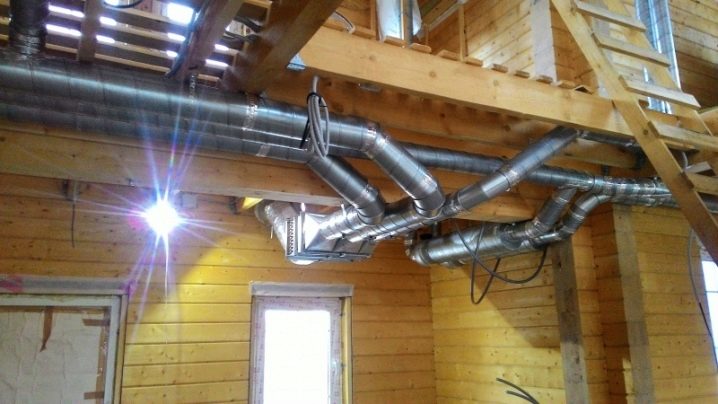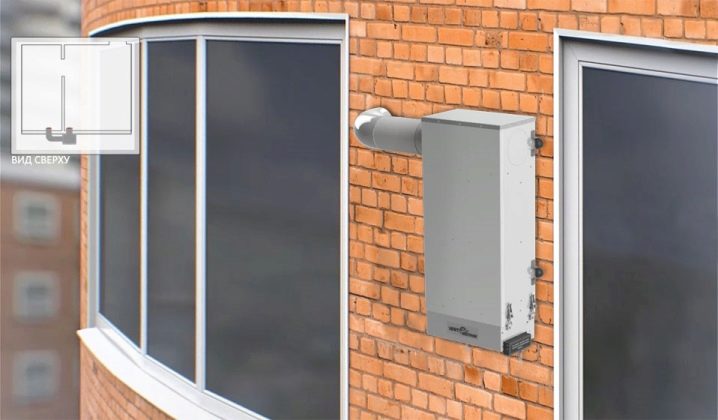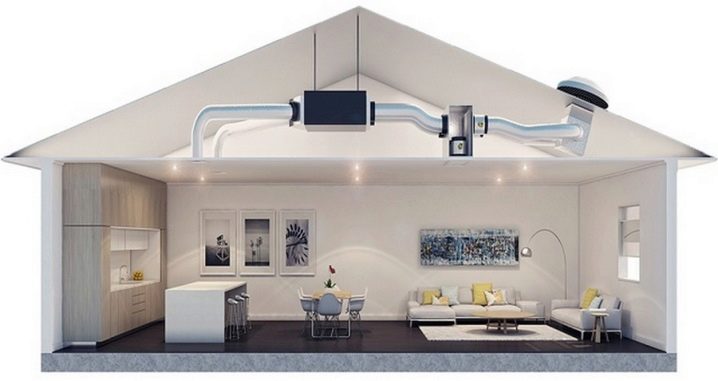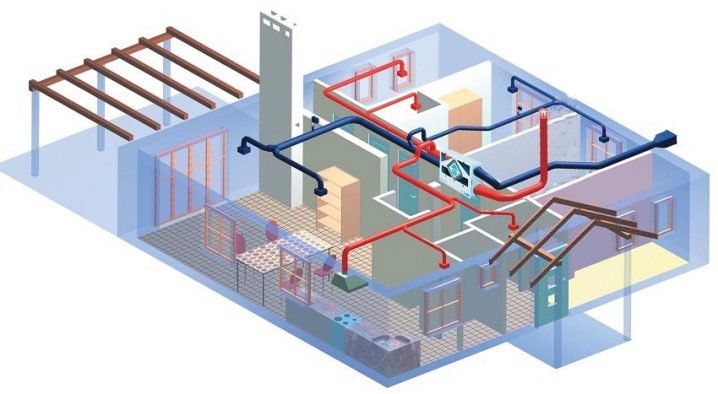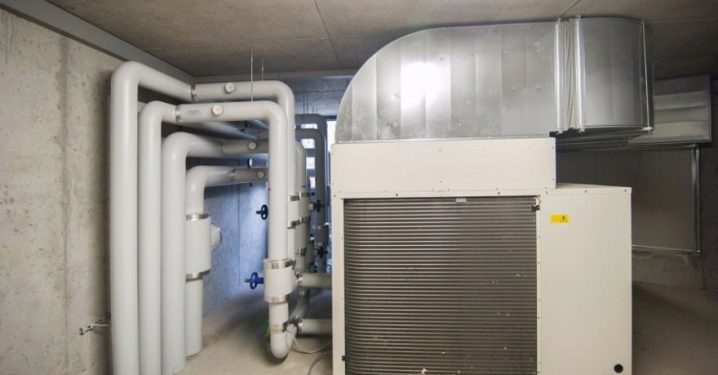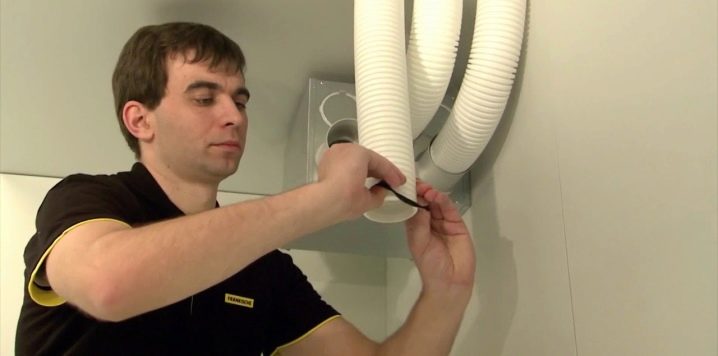Features of exhaust ventilation for the apartment
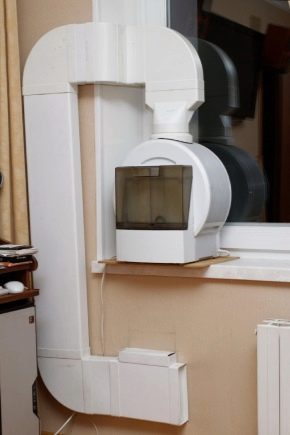
Supply and exhaust ventilation for the apartment is a popular exhaust system and is widely used in apartment buildings. The essence of the work of this installation is the removal of polluted air from the premises and transportation of fresh air to it.
Why do you need?
Good airing of the apartment is one of the main conditions for comfortable living and has a tangible impact on the well-being of people in it. In case of insufficient air exchange, the working capacity is noticeably deteriorated, a feeling of tiredness and lethargy appears. More recently, the problem of ventilation of apartments was solved with the help of a system that functions due to natural thrust, which was created due to the difference in temperature in the street and in the room.A prerequisite for the effective operation of such networks was the flow of air from wooden windows, which caused a draft and provided natural cravings. However, nowadays, with the advent of plastic windows, the problem of the ventilation of apartments has become very acute. Due to the high tightness, the glass units do not allow drafts, the movement of air masses stops and natural ventilation becomes impossible. The emergence of air handling units helped to effectively solve the problem of creating comfortable conditions for residents.
Device and principle of operation
Structurally, the supply and exhaust ventilation system is a complex device consisting of devices interacting with each other. Each element has its own functional purpose and is an integral part of one working chain.
- Air duct is considered the "skeleton" of the ventilation system and serves to transport polluted air to the street and supply clean air masses to the room. It consists of an extensive system of pipes, united in a common network by means of fittings: tees, elbows and elbows.The air duct can have a round or rectangular cross-section and be flexible, rigid or semi-flexible. The size of the pipe section is chosen individually and depends on the power of the ventilation unit, the area of the room and the maximum speed of the air flow. The material for the manufacture of ducts is galvanized steel, aluminum foil and synthetic polymers, which are more often polyisobutylene and vinyl plastic. Plastic models are usually installed with a high probability of condensation or in the case when the natural humidity of the air is too high. Such models are not subject to corrosion and will be able to serve up to 20 years. From above, the air ducts are wrapped with heat and sound insulators, after which they are hidden in false ceilings.
- The fan is also an important part of the system., and is responsible for the outflow / flow of air flow and the level of pressure inside the ducts.
It can be of two types.
- In the air handling units of private houses and cottages, centrifugal models are usually installed. They are equipped with paddle wheels located in hollow cylinders.The side parts of the wheels are equipped with blades located parallel to the axis of rotation. The wheels rotate, push the air to the periphery of the device and squeeze it, after which, under the influence of centrifugal force, the air goes into the spiral casing, and from there it flows to the injection port. The device has a not very high efficiency, but it is quite enough to exhaust air in systems with individual ventilation duct.
- For installation in apartment buildings, it is better to use models of the axial type. The instruments consist of paddle wheels and housings. The blades are firmly fixed on the sleeves at the right angle, which allows them to first capture the air flow, and then move it in the direction of the axis. The efficiency and productivity of axial instruments is much higher than that of centrifugal models, which allows them to be installed in systems with house ventilation channels.
- Air valve prevents the entry of outdoor air into the room during the disconnected ventilation. The valves are equipped with electric drives, which makes the process of opening / closing them fully automated.Some models are equipped with electric heating function, which completely eliminates their freezing in the winter.
- Filtration system It is also an important element of ventilation and provides reliable protection of the room from insects, dust and small mechanical debris. On household systems usually install a coarse filter, but if you want you can add very sensitive models of fine cleaning that can catch particles up to 0.1 microns in size.
- Heaters installed in the ventilation units, are water and electric. The devices serve to prevent the condensate from freezing and heat the supplied air during the winter period. For small apartments, you can get by installing an electrical model, while for a large cottage it is better to use a water model.
- Recuperators are the ideal solution to the problem of heating cold air, when compared to the heaters, they consume much less electricity. The essence of the operation of the devices is based on the heating of the incoming air with the help of the heat generated by the exhausted air masses.In the summer months, the device is able to work on cooling incoming flows, which eliminates the need to install an air conditioner.
- Noise suppressors extinguish noisesarising from the operation of electric fans, as well as blocking the hum created by the turbulence of air jets. Structurally distinguish tubular and lamellar models. The choice of the desired unit depends on the power of the ventilation unit, the length and aerodynamic qualities of the duct, as well as on the material from which it is made. However, noise suppressors are not mandatory for installation and can be successfully replaced by a set of measures aimed at reducing noise. For example, by reducing the speed of the air flow, increasing the efficiency of the fan or wrapping the device with any soundproof material.
- Air intake grilles protects the air duct from small items and precipitation, and air distributors are used for uniform dispersion of air masses in the room.
- Control system the ventilation system is needed to turn on and turn off the fan and the heater, open the air valve, adjust the volume of flow and timely alert about faults and breakdowns.The most modern models are equipped with a timer function and a built-in thermal sensor. Management and control is carried out by remote control. The control system includes the security system of the device. Thanks to the built-in fuses, the circuit will open and turn off the heater and the fan in case of critical overheating of the windings of their motors.
The principle of the supply and exhaust ventilation is the controlled replacement of the air volume of the premises through the inflow and removal of air masses. It is the exchange process that distinguishes the principle of operation of ventilation systems from the principle of operation of air conditioning systems, in which fresh air is often completely absent or limited. Ventilation functions at the junction of the closed space of the room and the external outdoor environment, and provides continuous and simultaneous circulation of air masses between them. The possibility of arranging an extensive duct network allows ventilation to provide any number of rooms in the apartment. In addition to the main function of replacing dirty air with clean air, supply and exhaust systems are often equipped with additional devicesthe work of which allows not only cleaning the air, but also moistening, ionizing, heating and disinfecting it.
Species
The modern market of ventilation equipment offers a large selection of both collapsible modular models and monoblocks. Modular units consist of individual elements that are purchased as independent products, and then mounted in a common network. This installation method allows you to create a system that meets the needs of a particular consumer and staff it in accordance with his wishes. The downside of modular designs is the need for complex calculations, project development and careful selection of elements that are compatible with each other. In addition, typesetting systems require professional testing and fine tuning. To carry out commissioning activities, you will have to use the services of specialists, which will cause additional financial costs and increase the time of work.
For installation of ventilation in apartments or private houses the most suitable option are monoblocks - these are systemsincludes all necessary devices and past the factory setting. The consumer only needs to properly install the structure and proceed to its operation. The advantages of monoblock ventilation systems is their compactness and good noise insulation. The disadvantages include the impossibility of choosing one or another component to your taste, as well as the complexity of equipping the system with additional devices. This is due to the fact that all the main components of the system are checked for compatibility and are configured; the installation of a new device will necessitate reconfiguration and adjustment of all the others.
Structurally monoblock installations are divided into several types.
- Individual models designed to serve one small room. The system has no ducts and is installed directly into the ventilation duct. The performance of such devices does not exceed 100 m³ / h, and installation is quite simple and fast. The advantages of the models are their compactness and low cost. The disadvantages include poor noise insulation and the possibility of locating the system only indoors.
- Channel Models are more powerful and productive. They are designed to supply and discharge air masses through the duct system. The performance of models can reach 500 m³ / h, which allows installing them in large two-level apartments and private houses on several floors. The advantages of channel models include efficient maintenance of large areas and long service life, and disadvantages include the need to equip especially powerful models with water heaters, which, in turn, requires connecting the ventilation unit to the heating system. Such a need is due to the fact that during the cold season the consumption of electricity for heating the incoming flow will be very large. For example, in order to heat the air flow in powerful high-performance devices up to +18 degrees, it will take up to 5 kW of electricity.
- Heat Recovery Systems can significantly reduce energy consumption for heating air flow. The efficiency of many types of heat exchangers reaches 90%, which makes it possible to dispense with the installation of an electric heater when operating the installation in a not very cold climate.The disadvantages of recuperators include the high cost of many models and the likelihood of mixing small portions of the incoming and outgoing flows, which leads to an unpleasant odor in the room. However, this negative effect is observed only in chamber models. Rotary, tubular and plate air mixing devices do not allow and can be safely used in domestic ventilation.
- Air conditioning systems assume joint placement of the conditioner and the fan in the uniform block. The device is equipped with automation and can work in several modes of ventilation and air conditioning. Modes are turned on automatically due to the climate controller, independently deciding which instrument to start.
System installation
When performing a clear sequence of work and observing safety precautions, even a novice master will be able to install the supply and exhaust ventilation. The first step will be drilling into holes that are equal in diameter to the size of the duct section. Then an air duct is inserted into this hole and preparation for installation of the installation body begins.To do this, attach the safety ropes to the device and only after that begin its fixation. After the case is installed, the system unit is connected to the duct. Further, holes are drilled in the wall for laying the electric cable, after which the power wires are connected, the diffuser bracket is mounted and the control panel is mounted. Installation of individual models is carried out according to a simplified scheme and consists in installing the device directly into the exhaust duct.
Tips and tricks
Judging by the feedback from consumers, the operation of supply and exhaust systems requires regular monitoring and timely replacement of filters. In addition, it is necessary to monitor the condition of the air ducts. This is especially true for corrugated models that are prone to the formation of fatty deposits and dust accumulation on their inner surfaces. The pipes are cleaned with the help of rigid brushes, with preliminary splashing of grease-dissolving liquid in the pipeline. In addition to the cleanliness of pipes and filters, it is necessary to monitor the integrity of the duct.
In the event of a pipe rupture, the leak tightness of the systemUsing a soldering iron for soldering pipes or heat-resistant sealant. If any of the electromechanical elements fail, you should immediately stop operating the ventilation unit and call the wizard. However, the best way to extend the life of the ventilation is timely prevention. To do this, once a year it is necessary to invite a specialist who will test the main units and, if they work incorrectly, will quickly eliminate the fault. Supply and exhaust ventilation is a practical solution for creating a comfortable microclimate in an apartment. With its help, you can quickly ventilate the room, provide warming of cold air in winter and, without resorting to installing an air conditioner, cool the room in summer.
To learn how to install ventilation in the apartment, see the following video.
